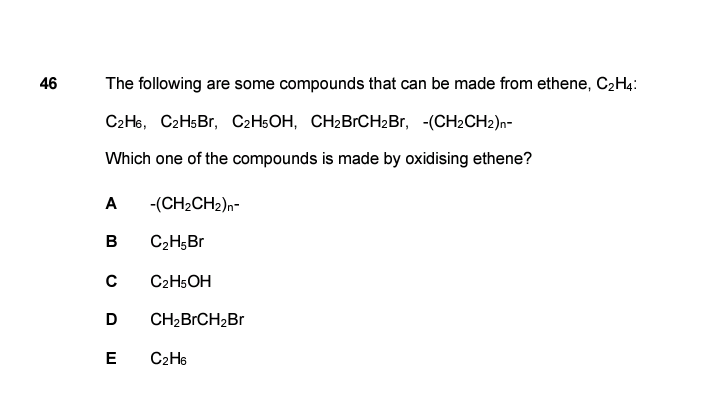Imat 2014 chemistry questions
this question has already been answered
https://imat.entermedschool.com/t/imat-2014-q46-chemistry/2971?u=yasy
This link is not working for me
Take a look at oxidation states of each carbon before and after. Carbon is more electronegative than hydrogen, so when it attaches to hydrogen carbon will be -1 and hydrogen +1. And if carbon attaches to a more electronegative atom it will become +1, if its oxidation number increase, its oxidized, if it decreases, its reduced.
To simplify things just look at what is beijg added and removed dont count them all. Now with that in mind, the first one, you added 2 hydrogens, each carbon is reduced as each carbon will change by -1.
2nd, HBr is added, one carbone is reduced by Hydrogen, -1 and the other is oxidized by Bromine so the carbon becomes +1, so they cancel out.
3rd, oxygen is more electronegative so the carbon its attached to becomes +1 and the other carbon gets a hydrogen becoming -1, again they cancel.
4th, u can see it already, both are oxidized as bromine is more electronegative so the carbon becomes +1, so they both are oxidized.
5th, is a polymer, it doesnt tell us anything.
hi! can you elaborate how you used the electronegativity to find Carbon has +1 charge? what is the rule? thank youu
If an atom is covalently bonded to an atom with a higher electronegativity it would be pulling electrons more towards it, thus it would be considered as the negative specie, so with carbon and bromine, bromine is much more electronegative so it is considered the negative specie while carbon is postive. Electronegativty increases as radius decreases, so across the period and up the group will be higher. Hope that makes sense.
